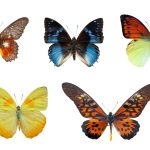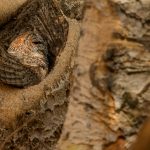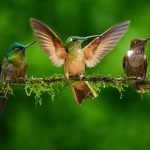Schools play a vital role in shaping values and mindsets towards environmental stewardship. Innovative programs that engage students can foster a deep appreciation for local wildlife. From hands-on conservation projects to interactive classroom lessons, these approaches ignite curiosity and create lasting connections with nature. Discover how British schools can transform education into a catalyst for wildlife conservation, empowering the next generation to protect their local ecosystems. Engaging young minds today ensures a healthier environment tomorrow.
Innovative Teaching Methods for Wildlife Conservation
Innovative education plays a vital role in developing effective wildlife conservation strategies. One such method is project-based learning, which actively engages students by involving them in real-world conservation projects. This approach not only enhances understanding but also fosters a sense of responsibility toward the environment. Through hands-on activities, students can directly contribute to wildlife conservation efforts, making the learning process both impactful and memorable.
A voir aussi : Protecting Wildlife: The Impact of UK”s Overpasses and Underpasses on Migratory Species Survival
Integrating technology in environmental education is another powerful tool. With the use of virtual reality, students can explore diverse ecosystems and observe wildlife in their natural habitats without leaving the classroom. This technological integration allows for a deeper understanding of complex ecological systems and the challenges they face, promoting informed decision-making in conservation efforts.
Outdoor classrooms offer experiential learning opportunities that are invaluable for wildlife conservation education. By stepping outside traditional classroom settings, students can observe and interact with nature directly. This immersive experience helps to solidify theoretical knowledge and encourages a genuine connection with the environment. Such experiences are crucial for developing future conservationists who are both knowledgeable and passionate about protecting wildlife.
A lire en complément : UK”s Drone Regulations: Safeguarding Nesting Raptors from Disturbance
These teaching methods collectively contribute to a comprehensive educational framework, preparing students to tackle environmental challenges with innovative solutions.
Case Studies of Successful Initiatives
Exploring successful conservation programs in British schools provides valuable insights into effective educational strategies. Various schools have implemented innovative wildlife programs that not only engage students but also yield significant conservation outcomes.
One notable example is the program at a school in East Sussex, where students participated in a project to restore local habitats. This initiative resulted in increased biodiversity and enhanced student engagement, as learners took ownership of their projects and saw tangible results. The program's success was attributed to its hands-on approach, allowing students to directly apply their classroom knowledge to real-world situations.
In another case, a London-based school integrated technology into its conservation curriculum. Using virtual reality, students explored endangered ecosystems, which heightened their awareness and understanding of global conservation challenges. This approach not only captivated students' interest but also encouraged them to think critically about solutions.
Lessons learned from these initiatives highlight the importance of combining traditional and modern teaching methods. Engaging students through practical experiences and technological tools fosters a deeper connection with the environment. These case studies demonstrate that when students are actively involved and inspired, conservation education becomes more impactful and enduring.
Practical Activities for Students
Incorporating hands-on conservation activities into the curriculum significantly boosts student engagement. These activities not only enhance learning but also instil a sense of environmental stewardship.
One effective approach is designing school gardens to promote local biodiversity. Students can participate in planning and planting native species, creating habitats for local wildlife. This direct involvement fosters a deeper understanding of ecological relationships and the importance of biodiversity.
Organizing wildlife observation and monitoring projects provides students with the opportunity to study local fauna in their natural settings. By tracking animal behaviour and population changes, students gain practical skills in data collection and analysis. These projects also highlight the impact of human activities on wildlife, encouraging students to consider sustainable practices.
Creating art and science projects focused on local species is another engaging method. Through art, students can express their understanding of wildlife and conservation creatively. Science projects, on the other hand, allow them to explore the biology and ecology of local species, reinforcing their classroom learning with tangible examples.
These practical activities are instrumental in cultivating informed and passionate conservationists, ready to tackle future environmental challenges.
Collaboration with Local Wildlife Organizations
Engaging in community partnerships with local wildlife organizations can significantly enhance educational outcomes and conservation efforts. These collaborations provide students with unique opportunities to gain practical experience and insights into real-world conservation challenges.
Partnering with local wildlife trusts can offer a range of benefits. Students can participate in conservation projects that are directly aligned with their curriculum, allowing them to apply classroom knowledge in meaningful ways. Such wildlife collaboration not only enriches their learning experience but also fosters a sense of responsibility and connection to their local environment.
Examples of successful collaborative projects include habitat restoration initiatives, where students work alongside experts to rehabilitate ecosystems. These projects not only improve local biodiversity but also empower students by giving them hands-on experience in conservation work. Another example is joint educational workshops that focus on specific conservation topics, providing students with access to expert knowledge and resources.
To initiate and maintain these partnerships, schools can reach out to local organizations and propose mutually beneficial projects. Establishing clear goals and regular communication ensures that both parties remain aligned. By fostering these relationships, schools can create a dynamic learning environment that prepares students for future conservation challenges.
Integrating Wildlife Conservation into Curriculum
Incorporating wildlife conservation into the curriculum involves creating robust frameworks that seamlessly integrate conservation topics into existing subjects. This approach ensures that students receive a comprehensive environmental education across various disciplines. By embedding conservation themes in subjects like science, geography, and even art, educators can cultivate a holistic understanding of ecological issues.
Developing interdisciplinary projects is a key strategy in curriculum development. These projects can focus on local wildlife, allowing students to study their immediate environment and its unique challenges. For instance, a project might involve researching local species and their habitats, culminating in a presentation that combines scientific data with artistic expression. Such projects not only enhance learning but also foster collaboration and critical thinking skills.
To successfully implement these changes, teacher training and resources are crucial. Educators must be equipped with the knowledge and tools to deliver effective conservation education. This can include workshops, access to up-to-date research, and teaching materials that align with conservation goals. By investing in teacher development, schools can ensure that the curriculum is both engaging and informative, preparing students to become informed stewards of the environment.
Community Involvement in Conservation Efforts
Engaging the community in local wildlife conservation is crucial for lasting impact. Community engagement not only enhances conservation efforts but also builds a network of support that benefits both schools and local organizations. Encouraging parental involvement in school-led conservation projects can significantly amplify these efforts. Parents can participate in activities such as habitat restoration or wildlife monitoring, providing additional resources and fostering a shared commitment to environmental stewardship.
Organizing community events is another effective strategy to raise awareness and garner support for conservation initiatives. Events such as wildlife fairs, educational workshops, or nature walks can attract diverse participants, increasing the reach and impact of conservation messages. These gatherings offer opportunities for schools to showcase student projects and achievements, further motivating students and engaging the community.
Building strong networks between schools and local organizations is essential for sustainable conservation efforts. Schools can collaborate with local wildlife trusts or environmental groups to access expertise, resources, and support. This collaboration can take many forms, from joint conservation projects to shared educational resources, creating a dynamic and interconnected community focused on protecting local wildlife. Through these efforts, community engagement becomes a powerful tool in advancing conservation goals.
Benefits of Fostering Environmental Awareness
Fostering environmental literacy in students has profound impacts on their attitudes and behaviours. Through environmental education, students become more aware of their ecological footprint and the importance of sustainable practices. This awareness often translates into eco-friendly habits, such as recycling and energy conservation, which are essential for preserving natural resources.
The long-term benefits of nurturing environmental awareness extend beyond individual students to communities and ecosystems. Educated students often become advocates for positive environmental change, influencing their peers and families. This ripple effect can lead to more sustainable communities that prioritise conservation efforts. Additionally, informed communities are better equipped to tackle environmental challenges, ensuring healthier ecosystems for future generations.
Moreover, integrating environmental education into the curriculum enhances students' critical thinking and problem-solving skills. Conservation efforts require analysing complex ecological issues and devising innovative solutions. By engaging in such activities, students develop the ability to think critically and approach problems from multiple perspectives. These skills are invaluable not only in environmental contexts but also in various academic and professional fields.
Through fostering environmental literacy, students gain a comprehensive understanding of their role in the ecosystem, preparing them to be proactive and responsible stewards of the environment.
Resources for Schools
Access to robust educational resources is crucial for schools aiming to enhance their wildlife conservation curriculum. Various books, websites, and organizations offer invaluable support, ensuring teachers have the tools needed to create impactful lessons.
Books such as "Last Child in the Woods" by Richard Louv and "Silent Spring" by Rachel Carson provide insightful perspectives on human-nature relationships. These texts can be used to spark discussions and deepen students' understanding of environmental issues.
Numerous websites serve as excellent conservation tools. The World Wildlife Fund (WWF) and National Geographic offer extensive resources, including lesson plans, videos, and interactive activities. These platforms provide updated information on global conservation efforts, allowing educators to integrate current events into their teaching.
Organizations like the Wildlife Trusts and the Royal Society for the Protection of Birds (RSPB) offer support through workshops and educational materials. They also provide opportunities for schools to participate in local conservation projects, fostering real-world application of classroom knowledge.
Funding is often a barrier to implementing conservation projects. Schools can explore grants offered by entities such as the Environmental Education Foundation, which supports initiatives that promote environmental stewardship. These resources collectively empower educators to deliver engaging and comprehensive wildlife conservation education.
Overcoming Challenges in Implementation
Implementing wildlife conservation education in schools often presents several implementation challenges. Common barriers include limited resources, resistance to change, and lack of expertise among educators. Schools may struggle with funding for materials or access to natural spaces, which are vital for effective conservation education.
To address these challenges, schools can adopt creative solutions in education. One strategy is forming partnerships with local environmental organizations, which can provide resources and expertise. Additionally, schools can apply for grants specifically aimed at supporting environmental education initiatives.
Another effective solution is integrating conservation topics into existing curricula, thus minimizing the need for additional resources. Teachers can incorporate conservation themes into subjects like science and geography, making the most of available materials.
Success stories abound, demonstrating how schools have overcome these hurdles. For example, a school in Yorkshire partnered with a local wildlife trust, gaining access to expert-led workshops and field trips. This collaboration not only enriched the students' learning experience but also fostered community support. By sharing these stories, schools can inspire others to pursue innovative solutions, ensuring that conservation education is both feasible and impactful.
Future Directions for Wildlife Conservation in Schools
Emerging trends in environmental education are reshaping how schools approach wildlife conservation. One significant trend is the integration of digital tools like augmented reality to simulate ecosystems, allowing students to interact with wildlife in virtual environments. This not only enhances engagement but also provides a safe platform for exploring complex ecological concepts.
Educational innovation is also driving the development of interdisciplinary programs that combine science, technology, and art to foster a comprehensive understanding of conservation. By blending these subjects, students gain diverse perspectives on environmental issues, encouraging creative problem-solving.
The role of policy is crucial in shaping conservation education. Government initiatives supporting curriculum development and funding are essential for implementing innovative programs. Policies that incentivize schools to adopt sustainable practices can further embed conservation into daily educational activities.
Looking ahead, the evolution of wildlife conservation initiatives in schools may see a greater emphasis on community-based projects. These projects can bridge the gap between classroom learning and real-world application, preparing students to become active participants in local conservation efforts. By embracing these future trends, schools can cultivate a new generation of environmentally conscious individuals ready to tackle global challenges.






